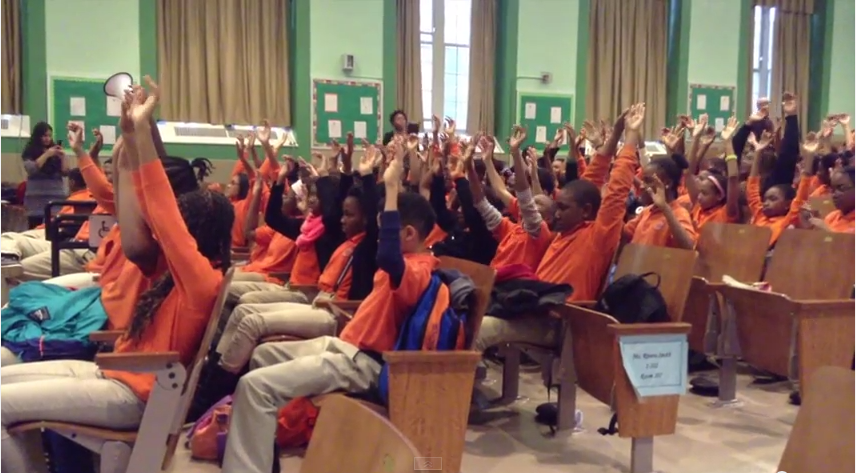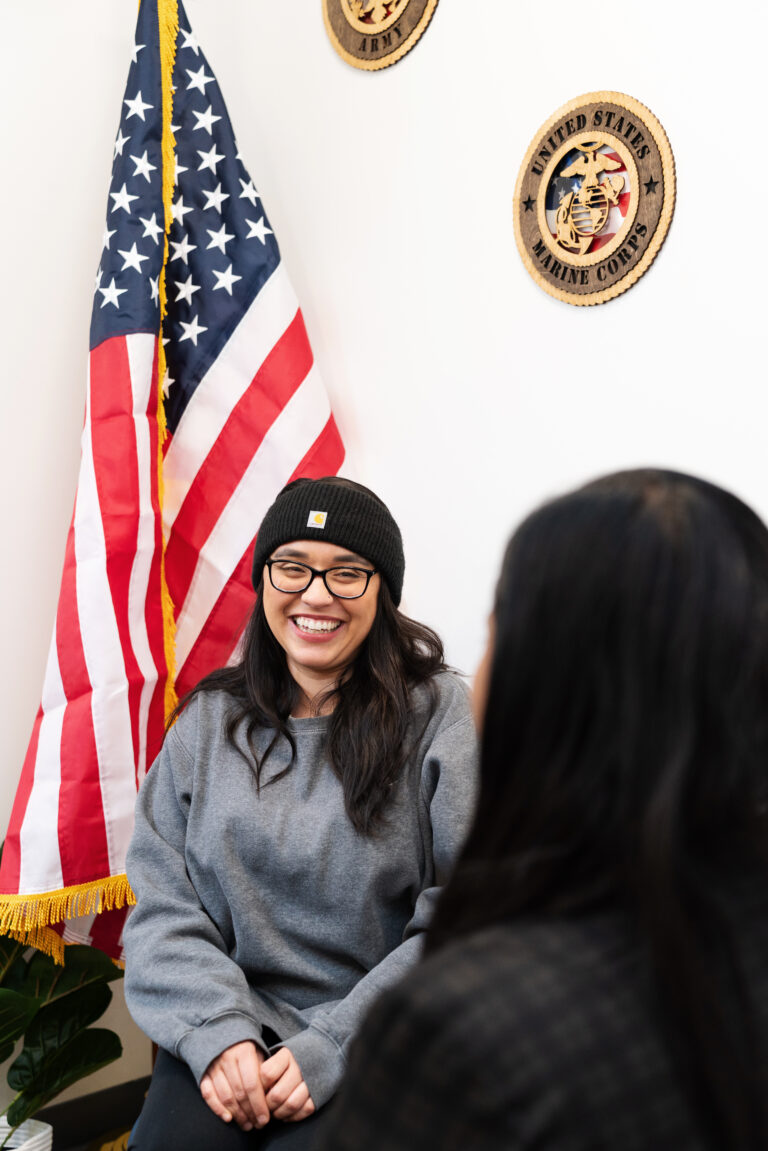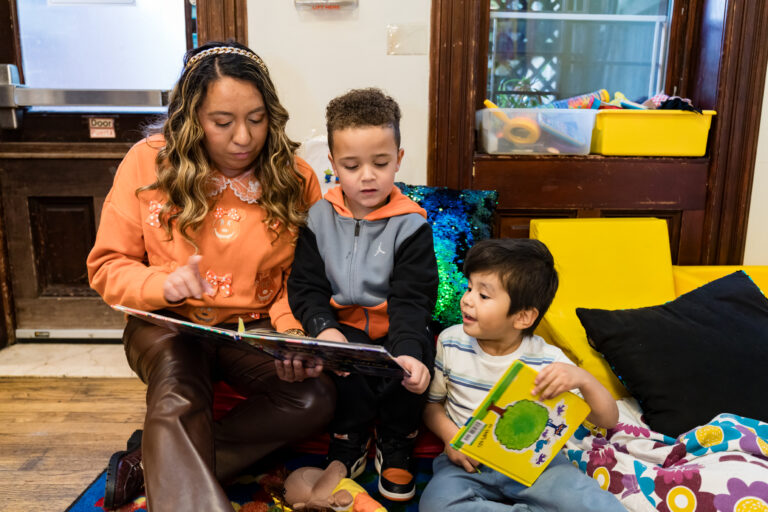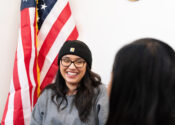In a moment of silence, Queens United Middle School students quietly raise both hands in a gesture that has become iconic over the last few months–“Hands up, don’t shoot.” It’s the final image in a student-led video project that highlights a voice we don’t always hear in the debate about racial inequality and police brutality–the teens who want people to know their lives matter, too.
The video project started with a Queens United Middle School forum, held after the decision not to indict Ferguson police officer Darren Wilson for shooting a young unarmed black man, Michael Brown. When the school gave kids a chance to share their feelings, the forum showed that students had a lot to say.
Marissa Badgley, Program Director of MS ExTRA at Queens United Middle School: “We realized there were a lot of feelings that needed to be explored. It really hit close to home for a lot of our young people. They started coming to me and saying what can we do? We want to do something.”
A group of scholars decided to create a video that would include the voices of their classmates and that would reach the world as quickly as humanly possible. Marissa and the students had a launch meeting where the students talked about what they wanted in the video and what they wanted it to be. Then the student leaders started interviewing their peers.
Student Director Dante Goodwyn, 7th grade: We asked, What do you know about Michael Brown? What have you heard? How do you feel about the controversy that’s been going on? What ideas would you share with the government to overcome the things that have been happening? Who are you and how do you describe yourself as a scholar at Queens United Middle School?”
At Queens United Middle School, students take two electives. During three days when the theme was social justice, students decided to express what they were passionate about, in a way that meant something to them. The art class made protest signs. The cheerleading class composed a chant and a cheer for Eric Garner and Michael Brown: “No justice. No Peace. I can’t breathe.” In poetry class, student expressed their thoughts in verse. The math class found statistics on black incarceration and academic success, and all of these contributions made their way into the video.
Dante: “I believe that we actually got our voice heard by people. They actually heard how we felt about the situation. I hope that they believe that the cops have been doing their job wrong or incorrectly.”
Tori Wesley, 7th grade, whose passionate speech about racial justice was one of the video’s highlights: “The fact that it’s coming from kids–we change what’s going on. I think that all the kids were happy to give their opinion. Everybody was proud to say what they have to say without having to hesitate.”
The scholars did 50 interviews with scholars and teachers over five days, ending up with over seven hours of footage. Although Marissa did most of the editing, the students directed her on what they wanted to include. All the students can see their contributions throughout the video, even if their interview didn’t make it in, and the project brought the school together. Marissa said it was the most passionate she’s seen her students get about anything.
Marissa told her students that when she was in school during 9/11, adults shut children out and chose not to talk about it because they didn’t think kids would be able to understand the nuances of the situation. The MS ExTRA program wanted to do things differently.
Marissa: “The message we’re trying to send that is missing from a lot of school cultures is this notion that kids are a part of history. It’s not something that’s happening to them and around them, but it’s happening with them and they should have an active interest in that. We sometimes fail to give our kids credit for being able to see nuances better than adults. When they hear about Tamir Rice, a 12-year-old, that’s them. They see themselves in these kids who are getting killed and that shouldn’t be forgotten.”





